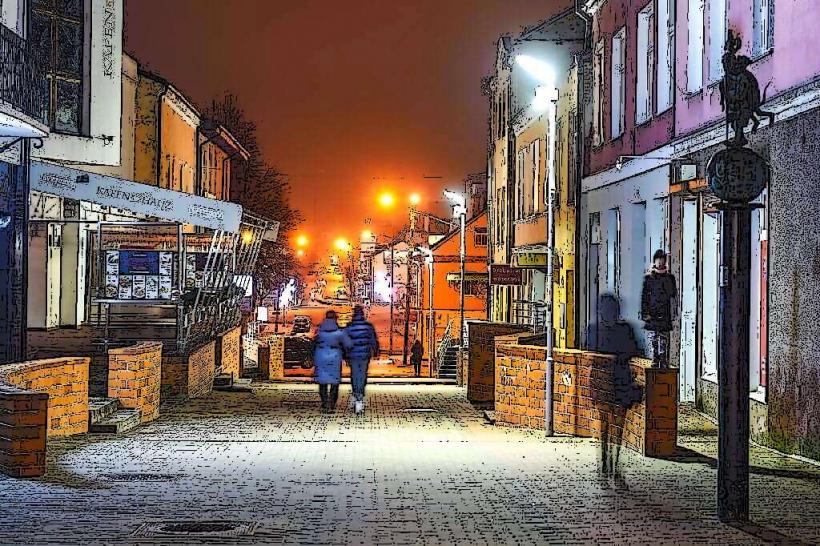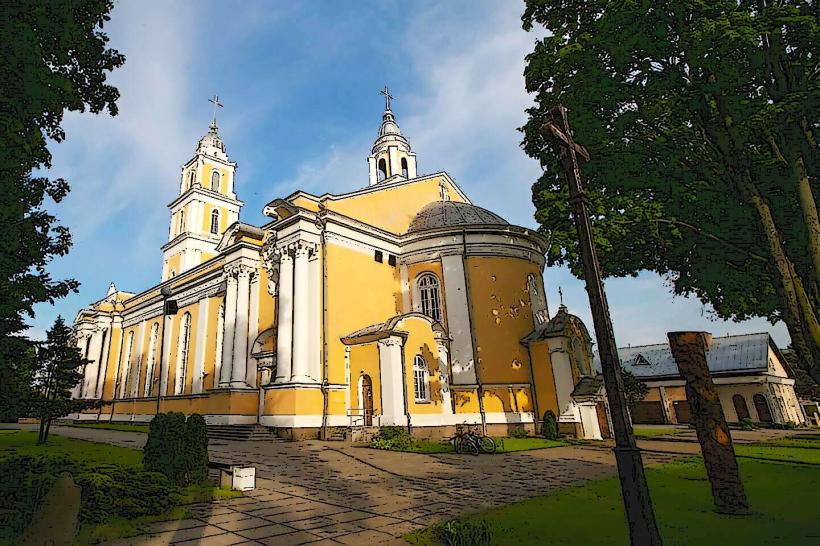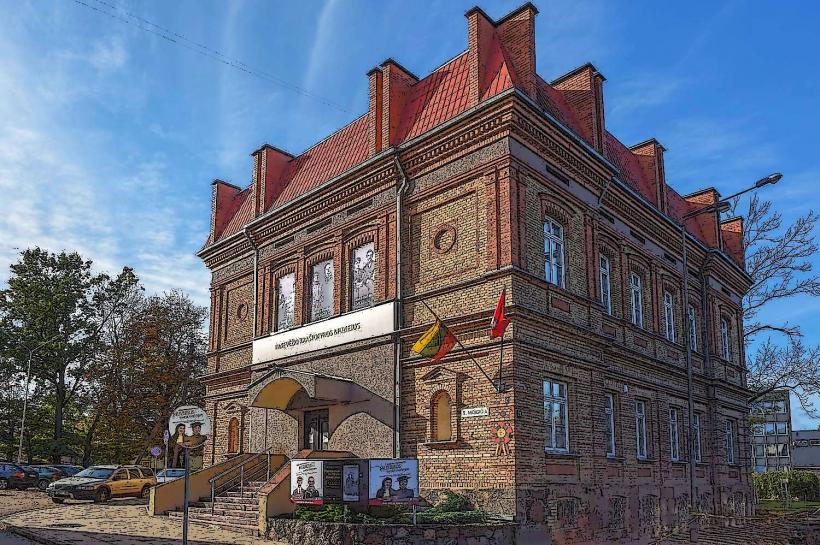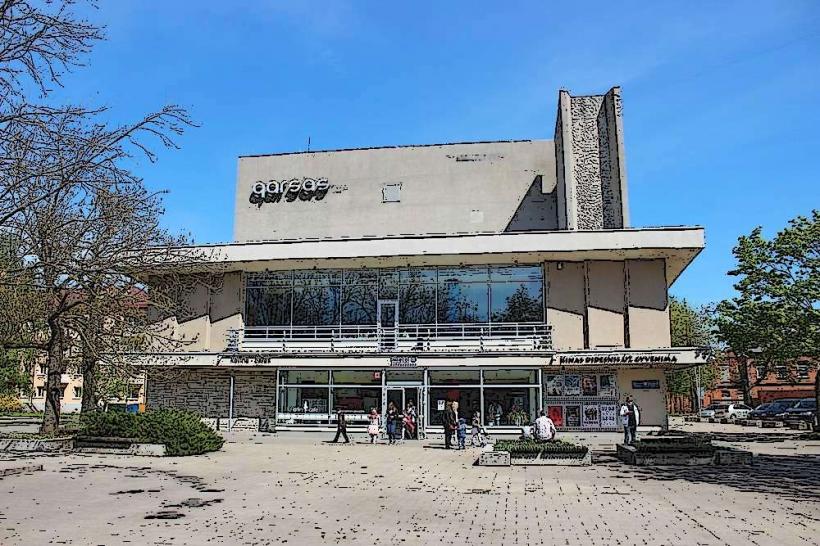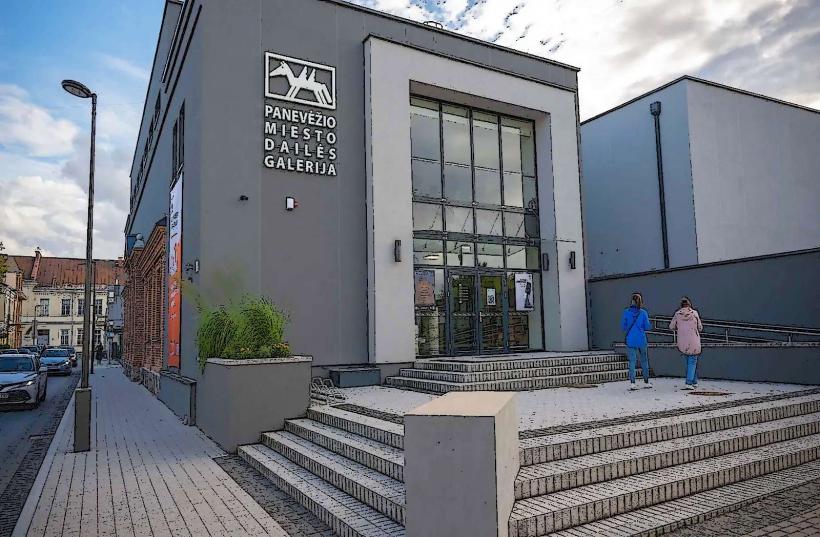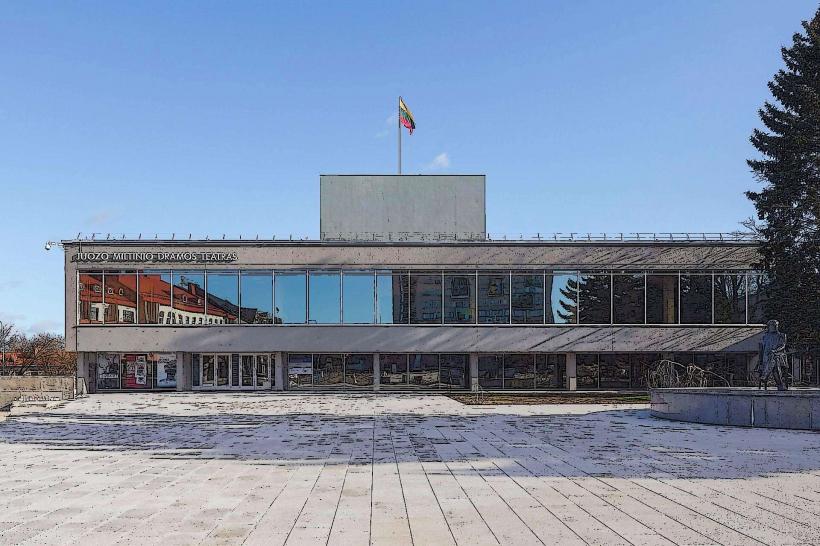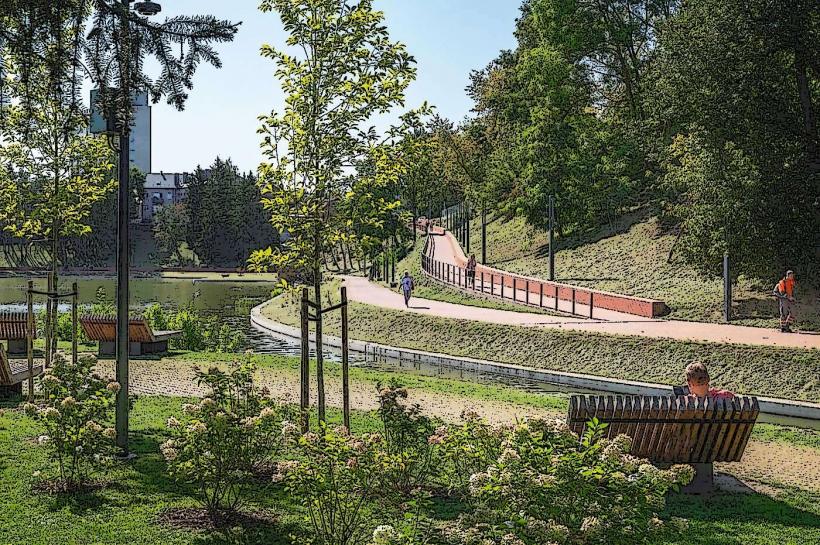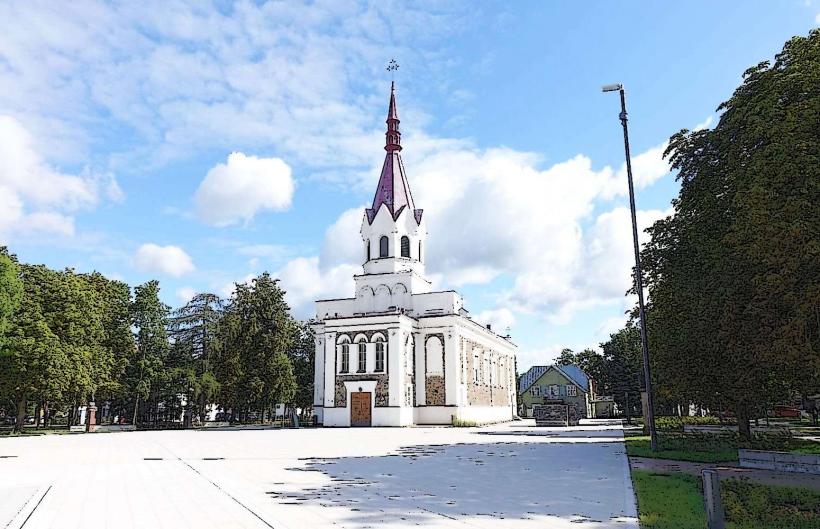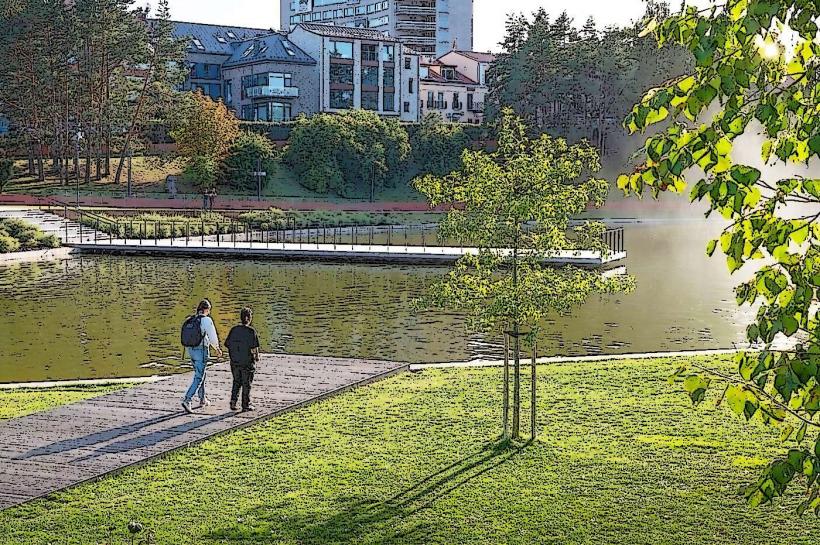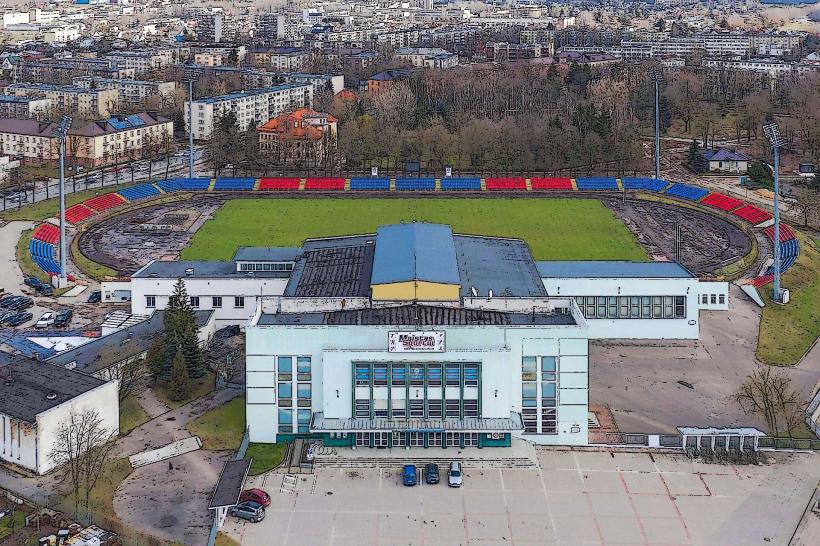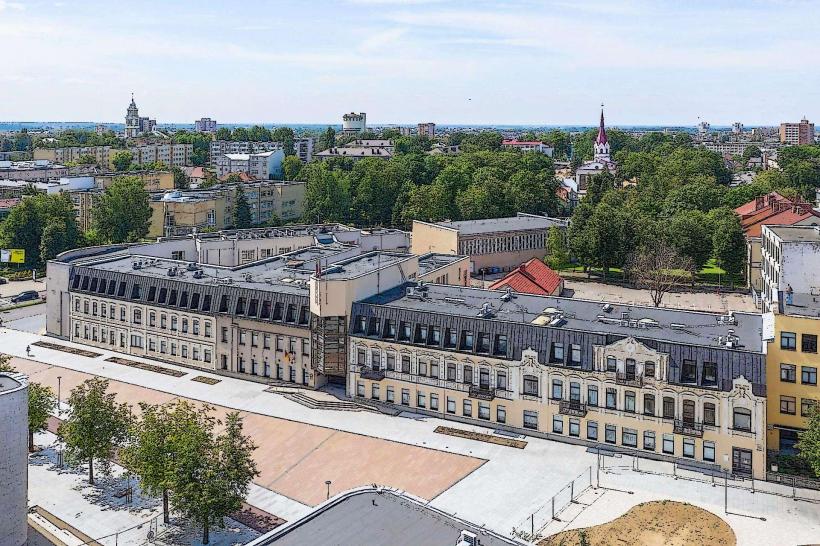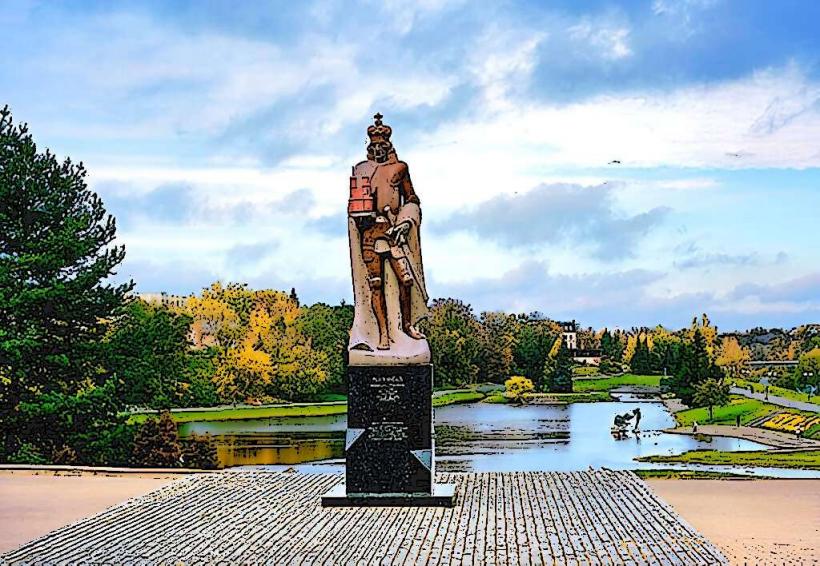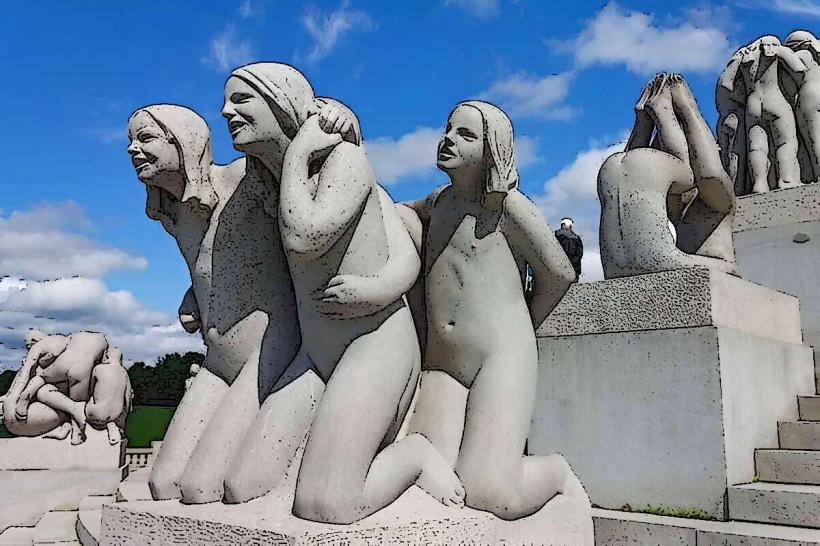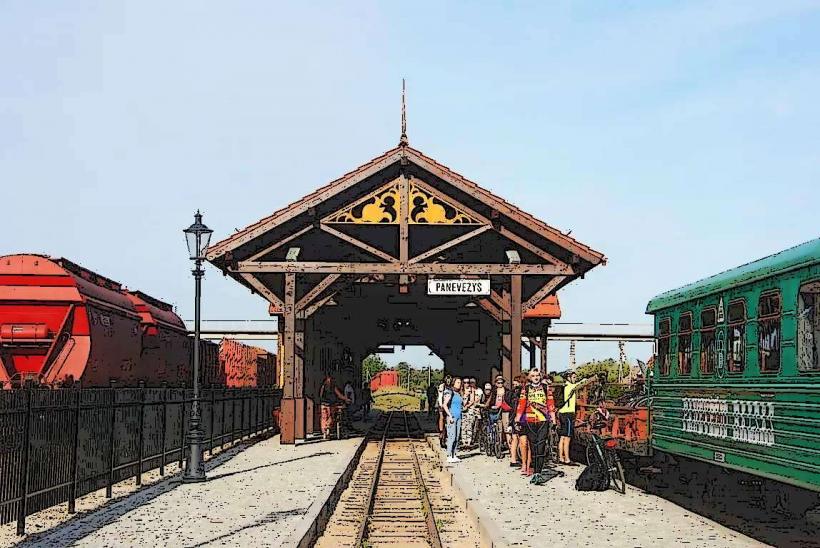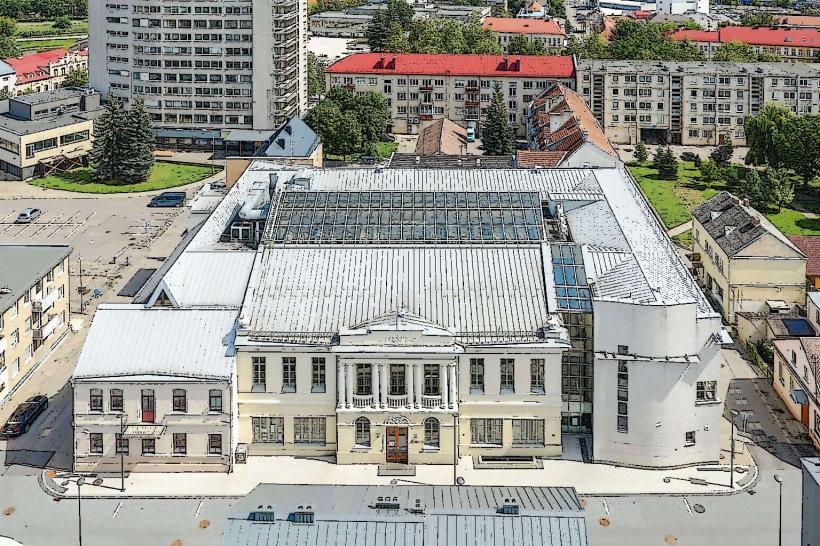Information
Landmark: Church of St. Peter and St. PaulCity: Panevezys
Country: Lithuania
Continent: Europe
The Church of St. Peter and St. Paul (Šv. Petro ir Povilo bažnyčia) in Panevėžys, Lithuania, is one of the city's most prominent and architecturally significant religious landmarks. Known for its stunning design and historical importance, this Baroque-style church is a key example of Lithuania’s religious heritage.
History
- Foundation: The church was built in the 18th century, with its construction beginning in 1745. It was completed and consecrated in 1765, marking it as a significant addition to Panevėžys' religious and architectural landscape.
- Patrons and Significance: The church is dedicated to St. Peter and St. Paul, two of Christianity’s most important apostles. The dedication reflects the strong Catholic presence in the region during that period.
- Renovations: Over the years, the church has undergone several restorations to preserve its architectural integrity, especially after damage caused by wars and other historical events.
Architecture
The Church of St. Peter and St. Paul is a fine example of the Baroque architectural style, which was popular in Lithuania during the 17th and 18th centuries. Some notable features include:
Exterior
- Facade: The church has a beautiful, ornate façade that exemplifies the Baroque style, with intricate details and decorations that draw the eye.
- Towers: The two tall towers on either side of the church’s main entrance are a key feature of its symmetrical design, adding to the church’s monumental appearance.
- Dome: The church is topped with a domed roof, which is a common characteristic in Baroque church design, creating a grand and visually striking structure.
Interior
- Vaulted Ceilings: The interior of the church is known for its high vaulted ceilings, contributing to the sense of openness and grandeur typical of Baroque churches.
- Altars: The church houses several altars, each beautifully crafted and decorated. The main altar, dedicated to St. Peter and St. Paul, is the focal point of the interior, featuring intricate carvings and sculptures.
- Woodwork and Decorations: The interior boasts exceptional woodwork, particularly in the form of altarpieces and pews. The use of gold leaf and other decorative elements highlights the richness of the Baroque style.
- Stained Glass Windows: The stained-glass windows depict various biblical scenes, contributing color and light to the interior, while also providing visual storytelling.
Art and Religious Significance
The Church of St. Peter and St. Paul is not only a place of worship but also a repository of religious art:
- Baroque Art: The altars, sculptures, and paintings inside the church are prime examples of Baroque religious art, which often combined dramatic expression with devotion and piety.
- Historical Context: The church holds an important place in the local Catholic community and has long been the site of significant religious events, including Masses, weddings, and other ceremonies.
Visiting the Church
- Location: The Church of St. Peter and St. Paul is centrally located in Panevėžys, making it a significant landmark for visitors to the city. It is easily accessible for both locals and tourists.
- Visiting Hours: The church is open to the public during regular hours, with Masses held regularly. It’s a popular destination for both spiritual visitors and those interested in architecture and history.
- Cultural Importance: As a Baroque masterpiece, the church is a vital part of the city’s cultural and architectural heritage. Visitors can admire the detailed craftsmanship and learn more about the history of Catholicism in the region.
Conclusion
The Church of St. Peter and St. Paul in Panevėžys is a magnificent Baroque church, both a spiritual center and a historical monument. Its rich architectural features, ornate interior, and historical significance make it a must-visit destination for those interested in Lithuanian religious heritage and Baroque art. Whether you are visiting for its spiritual atmosphere or to admire its beauty, the church stands as a testament to the region's artistic and cultural legacy.

